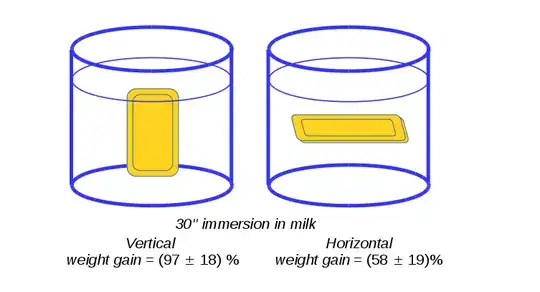Together with my 5 years old assistant, after endless observations breakfast after breakfast, we finally decided to be serious about it, and quantify a remarkable property of biscuits in milk.
Surely, we are humbly trying to climb on the shoulders of a giant. In his book, Len Fisher explains a lot of the physics of dunking doughnuts, but I couldn't find this particular feature:
So, we see a big difference in weight gained by a biscuit during full immersion in milk, depending on its orientation. When immersed vertical, the milk permeates much faster than when the biscuit is immersed horizontally. Which makes the vertical orientation not only more practical but also unfortunately useful in our world where breakfast time tends to be minimized. You are invited to reproduce it with your biscuits!
What is the mechanism that explains this?
(Methods: the numbers in the picture correspond to a dozen of biscuits [yum] of the same batch, mean weight = 8g, held in milk using kitchen tweezers without breaking. The error is the st.dev. The scale has 1g sensitivity. My assistant left at biscuit number 3 ...)
